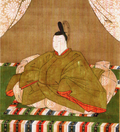| Years |
|---|
| Millennium |
| 1st millennium |
| Centuries |
| Decades |
| Years |
| AD 707 by topic |
|---|
| Leaders |
| Categories |
| Gregorian calendar | 707 DCCVII |
| Ab urbe condita | 1460 |
| Armenian calendar | 156 ԹՎ ՃԾԶ |
| Assyrian calendar | 5457 |
| Balinese saka calendar | 628–629 |
| Bengali calendar | 113–114 |
| Berber calendar | 1657 |
| Buddhist calendar | 1251 |
| Burmese calendar | 69 |
| Byzantine calendar | 6215–6216 |
| Chinese calendar | 丙午年 (Fire Horse) 3404 or 3197 — to — 丁未年 (Fire Goat) 3405 or 3198 |
| Coptic calendar | 423–424 |
| Discordian calendar | 1873 |
| Ethiopian calendar | 699–700 |
| Hebrew calendar | 4467–4468 |
| Hindu calendars | |
| - Vikram Samvat | 763–764 |
| - Shaka Samvat | 628–629 |
| - Kali Yuga | 3807–3808 |
| Holocene calendar | 10707 |
| Iranian calendar | 85–86 |
| Islamic calendar | 88–89 |
| Japanese calendar | Keiun 4 (慶雲4年) |
| Javanese calendar | 599–600 |
| Julian calendar | 707 DCCVII |
| Korean calendar | 3040 |
| Minguo calendar | 1205 before ROC 民前1205年 |
| Nanakshahi calendar | −761 |
| Seleucid era | 1018/1019 AG |
| Thai solar calendar | 1249–1250 |
| Tibetan calendar | མེ་ཕོ་རྟ་ལོ་ (male Fire-Horse) 833 or 452 or −320 — to — མེ་མོ་ལུག་ལོ་ (female Fire-Sheep) 834 or 453 or −319 |

Year 707 ( DCCVII ) was a common year starting on Saturday of the Julian calendar. The denomination 707 for this year has been used since the early medieval period, when the Anno Domini calendar era became the prevalent method in Europe for naming years.

